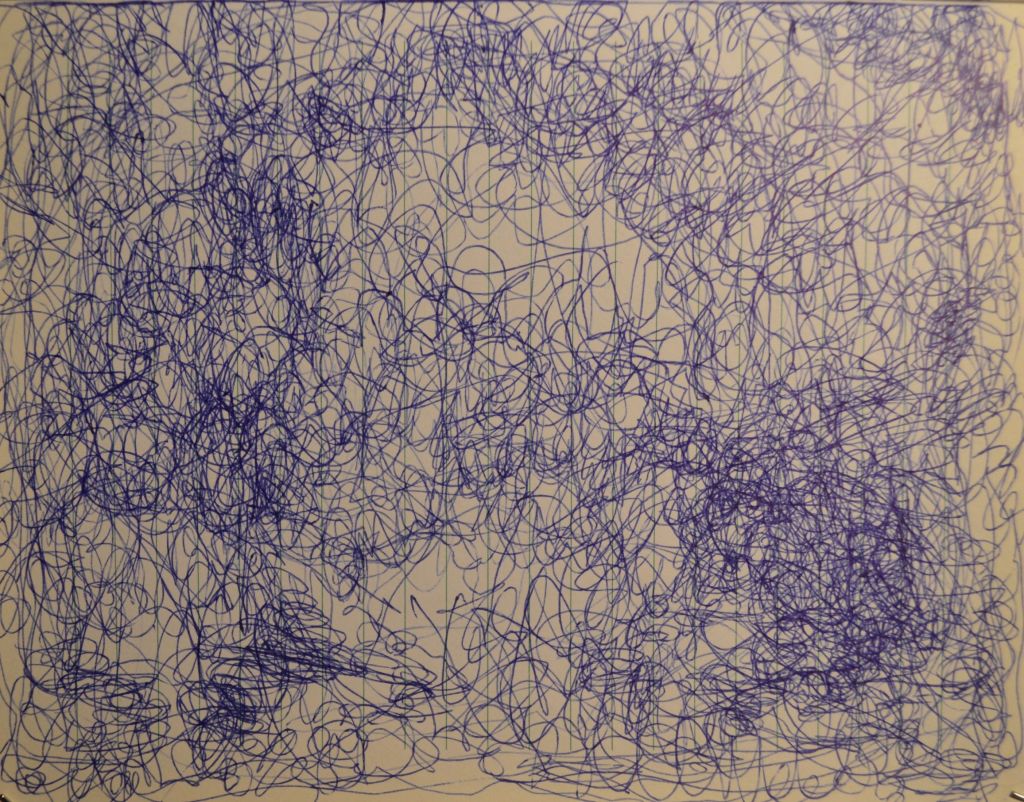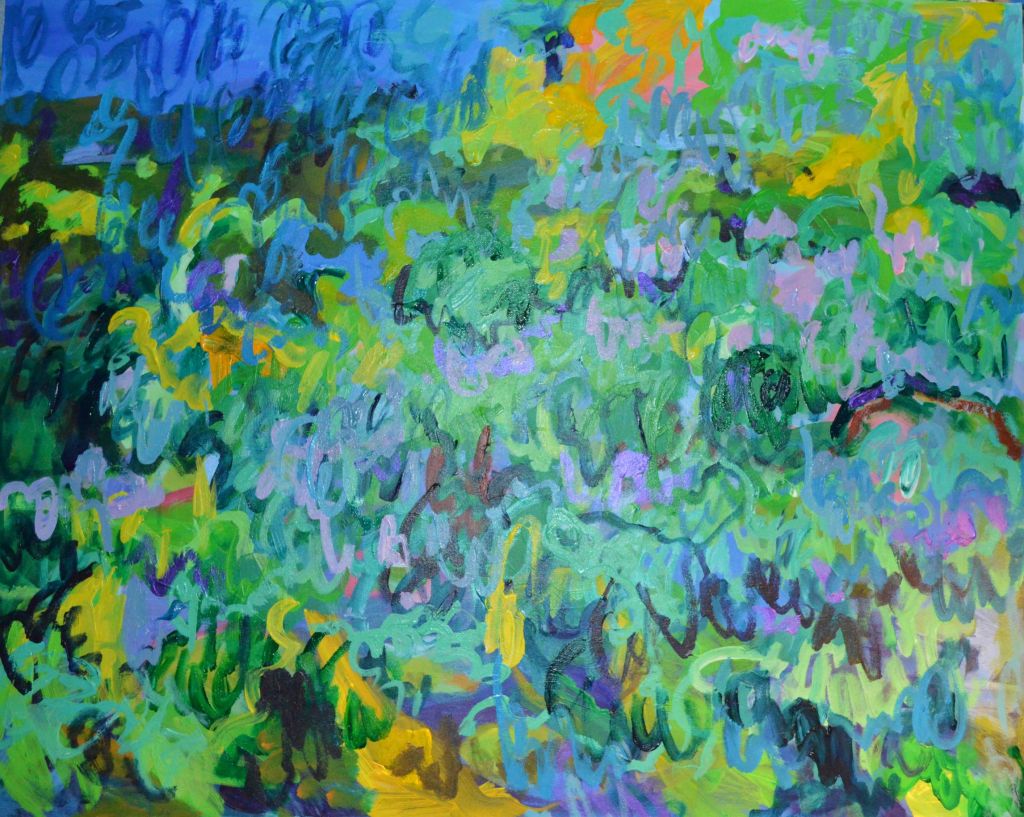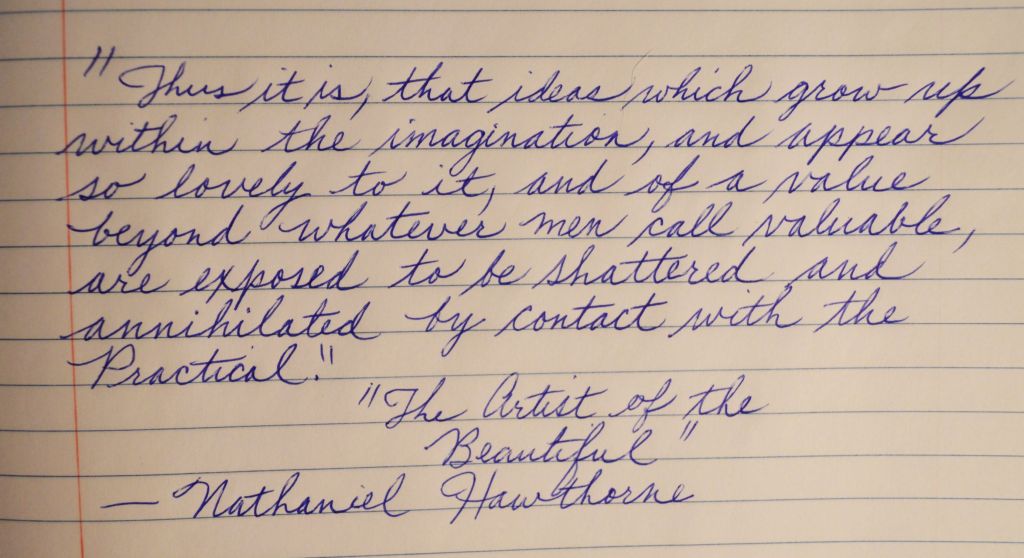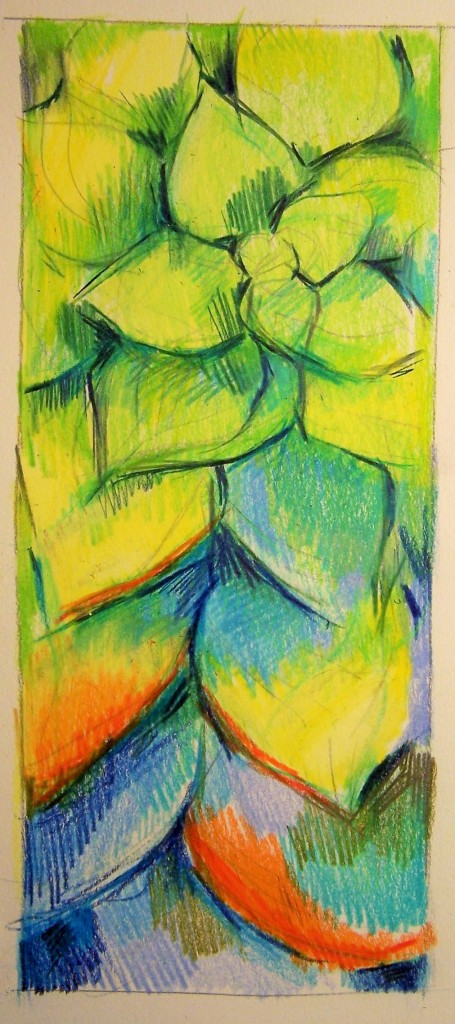
The Youtube algorithm brought me a tutorial on cursive, not sure why, but there it was and the penmanship in the intro screen was marvelous. I made a note to play that video later, during which time I wrote along with the presenter. I don’t know what she says in the video because I didn’t actually listen. I had music playing on another channel, so I just watched and wrote in unison — which is rather tricky since you can’t look at her writing and your own at the same time. If I were keen on getting the letter shapes just like hers, I’d have to stop the video periodically. Note to self.
I was doing the video more for fun than instruction. However, one viewing has greatly improved my handwriting. The key is slowing down. In her introduction she makes lots of scribbles and tests out different pens. Exactly the same sort of scribbling is great for drawing and for testing pens that you intend to use for drawing.
Flashback, a few days earlier, I had made some scribble drawings such as the one above to finish off the ink in a pen that was running out. Turns out the pen had much more ink than I knew and like the Energizer Bunny, just kept going and going. I was drawing without looking — actually I was drawing while reading something. It was a lark. Restful, aimless making of lines while looking elsewhere. The drawing at the top turned out to hold some interest. I even dropped a photo of it into the computer so I could add digital color and more lines.

Everything reminds me of Monet lately. I look into these ballpoint pen clouds and see bits of Giverny. When I did the penmanship exercises a few days later, I didn’t make the connection between the warm-up scribble session at the video’s beginning and my “mindfulness” drawings (there were others!). But later still I was working on a first version of a painting I saw in a dream. The “dream” painting consists of mostly dark blues and greens in brushstrokes formed as loopy scribbles. The penmanship video and my mindfulness exercise flowed together without my awareness. And both contributed to the painting just as silently and stealthily.

My mind went out for a walk and brought back curiosities, and I was the last to know. It’s odd how things connect together without one’s conscious notice. The left hemisphere doesn’t know what the right hemisphere is doing. The penmanship video not only improved my cursive, it contributed something to the gestures in the painting. The scribbles in the painting represent in curling, coiling brushstrokes the edges of thousands of leaves of foliage in the dark green painting of my dream.

Practicality has been kinder to me than to the artist of Hawthorne’s story. Maybe it’s because my stealth cognition hides many of the real causes of my ideas from me, preferring to manage those sorts of things itself. Practicality thus cooperates with art, and things just flow together. If you’d like to let your subconscious play tricks on you, too, or if you just want to improve your writing, here’s the link.








